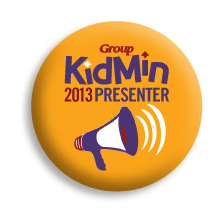
Leaders: share this post with single parents!
Parenting alone can be overwhelming. If you are a single parent, the following strategies can lift some of the burden of running your home:
- The responsibilities
- The chores
- The kids
- The car
- The laundry
- The appointments
- The kids’ activities
- The schedule changes
- The extra jobs or overtime
So let me ask you: Are you up for a summer challenge? A challenge that would make your life more fun and more enjoyable for the entire family this summer?
Many single parents try to do it all alone. For some, it’s a bad habit they get into from the beginning. For others, when things get hectic with kids’ activities during the school year, they slip into being the only one responsible on the home front.
Then comes summer, and the kids are out of school with extra time on their hands. The beginning of summer is a good time to step back and assess some changes that could make your life simpler and less hectic. Sound good? Read on.
It is not necessary or fair to the parent or the children for the parent to be the only one responsible for the home. Children need to be taught how to contribute. When children contribute, they feel more connected to the family.
Oh, many kids will gripe and complain, but basically, they feel included when they share family responsibilities. Plus, you are teaching them life skills they will need as they become adults.
Divide and conquer
Have a family meeting. Talk about the things that need to be done on a
Daily basis
- Make their beds
- Put dirty dishes in the dishwasher
- Put clean dishes away each day
- Meal preparation
Weekly basis
- Clean bathrooms
- Dust and vacuum
- Mop kitchen (or other floors)
- Sort, wash, and fold laundry
- Mow the yard
Monthly basis
- Yardwork
- Deep cleaning
- Wash car
- Clean inside car
- Polish furniture and mirrors
Make it fun
Decide in advance what is needed to keep your home clean and tidy. Then take a trip to the store. Purchase some new items to use when cleaning. Somehow, it’s more fun when one has a new, shiny item to use when cleaning. Or when you get the newest cleaning spray that comes out purple but turns white right before your eyes.
At the store, give everyone a list of different items, and then let them scatter to scavenger hunt for their items. To keep it safe, go down one aisle at a time, and let the kids can scavenger hunt on the aisle in front of them. Make it a game of fun, and celebrate each accomplishment. Whoop and holler as the kids bring in their treasures.
More tips
What worked best for me was to make up a list each week, and let everyone sign up for what they wanted to do. That included me. I’d much rather be raking the grass than sorting socks.
During the week, everyone’s job had to be done before bedtime. On Saturday, they could choose when to do their jobs. My son liked to get his stuff done early, while my daughter did better later in the day. Allow your kids to make their own decisions on what works best for them (a life skill many kids don’t get to develop early on).
Make sure everyone has a “responsibility,” even the youngest of children. Even two and three year olds can learn to put their own clothes away. Make a game of sorting socks, underwear, shorts, and shirts and putting them where the items are stored. Believe it or not, toddlers like to help, and they can learn to fold things like washcloths. They like being a member of the working team.
I always disliked the term “chore,” so I used “responsibility” in our home. Choose whatever term works best for your home.
What doesn’t work is to try and reward kids with stickers or other rewards. Children should do the job because they are contributing to the family, not trying to get a reward. When they ask what they get, tell them they get the pleasure of living in your home (smile).
Take a picture
Another tip is to work and get each room cleaned and things put away the way you want them. Then take a picture of it. Whether it’s the dishes in the kitchen cabinets, the storage under the bathroom sink, the living room, or the children’s bedrooms, get a picture. Post the picture in a prominent place. This gives them a visual of what things should look like when they are done.
Teach them the right way
At first, it might seem like more work, not less, to teach your kids how to do things. Even so, in the long run, it can be a relationship builder—and they really can help with some of the load you are carrying. The key is “teaching” them what to do and how to do it.
When my son was eight, and my daughter was twelve, I took them into the laundry room and said, “Today, you are going to learn how to do your own laundry. This is a washing machine, and this is a dryer. Here is what you do:
- Sort your clothes by colors.
- Put in like colors in the washing machine together.
- Pour in one cup of detergent.
- Turn the washer on like this.
- Blah, blah, blah.”
From that day forward, I no longer was responsible for my children’s laundry. I had to cringe several times when one of them wore something that was supposed to be white but was pink because it wasn’t washed correctly. Or when they walked out of the house with wet clothes on because they forgot to put their things in the dryer the night before.
Now, my daughter has her own children doing their laundry. Even the six year old does all of his laundry. Last time I visited them, he had to show me how to work the new washing machine and dryer.
Some younger children get overwhelmed with all the stuff!
My three-year-old grandson was like that. I lived in his home while my daughter was deployed to Afghanistan. I would help him clean his room, but in a couple of days, it was a mess again.
My daughter had buckets and bins marked where toys were to be stored. He knew where things went. One night, I explained that anything left on the floor the next morning after he went to preschool would be put in a bag and placed in the closet. The next morning, there were a few items put away, but one could still hardly walk through the room.
I got busy and bagged up everything on the floor. When he came home that evening, instead of being upset about it, he was excited. He kept twirling around and saying, “Wook, wook, it’s cwean. My woom is cwean!”
It then dawned on me that his little, three-year-old mind wasn’t big enough to handle so much clutter. I explained if he wanted something out of the closet, he would have to find another toy to trade. It was a win-win for everyone.
When you give your kids an opportunity to have a “cwean woom,” you get a break too. So take up this summer challenge to get everyone in the family involved in keeping the home front in order.
Here is a great guide for age-appropriate chores for kids http://cf.bitzngiggles.com/wp-content/uploads/2015/01/Age-Appropriate-Chores-for-Kids.jpg
This article is updated and adapted from an article originally published on the Kids & Divorce blog on June 11, 2015.
DC4K blog posts are great for training children’s leaders and volunteers, and they are free. Subscribe now.
Want to learn more about how to start a DivorceCare for Kids group for the hurting children in your community?
Did you know DC4K blog articles are on Pinterest? Divorce & Kids, Children’s Pastors, Single Parents, they’re all there.
Follow dc4kLinda on Twitter.
Like our DivorceCare for Kids and Single & Parenting Facebook pages where we give awesome parenting tips for the single parents in your ministries.









